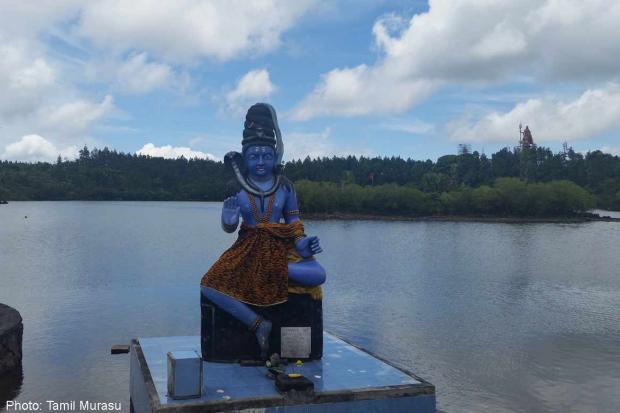 The island paradise in the Indian Ocean is known among holidaymakers. But what is little known is that it is home to over 300 Hindu temples, making Mauritius a land rich in Hinduism.
The island paradise in the Indian Ocean is known among holidaymakers. But what is little known is that it is home to over 300 Hindu temples, making Mauritius a land rich in Hinduism.
From small shrines in the sugar plantations to huge structures scattered across the 1,860 sq km island, the Hindu temples in Mauritius cater to the Indian population of 588,000 – a figure that is slightly higher than that in Singapore.
Consider then, that in Singapore, there are more than 25 Hindu temples, according to the Hindu Endowments Board.
Most of the temples in the sugar plantations are about 100 years old and built by the Tamil labourers who worked there.
One of the most visited temples and a tourist attraction is the Eswarnath Shiv Jyothir Lingum temple located in Grand Bassin or “Ganga Talao”, as the locals call it, to associate it with the river Ganga.
This temple lies secluded in the mountains south of Mauritius and is about 1,800 feet above sea level.
It was first erected in 1898 by a priest and attracts more then 400,000 people on average annually during the Maha Shivaratri festival, an auspicious day for Lord Shiva, where Hindus fast, pray and stay awake throughout the night.
Compared to the 9.2 per cent of Indians in Singapore, the Indians in Mauritius make up about 48 per cent, nearly half of the 1.2 million population.
Though most of the Indians on the island speak Creole and broken French, they have not given up the traditions and culture of their forefathers.
Clad in saris, wearing a thaali (sacred thread or chain a groom ties around the bride’s neck) and having bhindis on their foreheads, the Mauritian Indian women cook typical Indian meals such as chappati, puri, sambar and rasam as well as their famous chilli and mango pickles.
“We celebrate occasions such as Deepavali, Pongal, Ugadi, Maha Shivaratri and other auspicious days,” said Mr Muthu, a fourth-generation Indian.
He added that traditional marriage practices are still practised, like holding the ceremony at a temple and following all the rituals but with the addition of a “sega” dance which originated in Mauritius during the period of slavery.
The first Indians arrived in Mauritus during French rule in the 1700s. They came from Pondicherry as artisans – mainly masons and joiners – to teach their craft to the Mauritians who were then mostly slaves from Africa.
On Nov 2, 1834, the first Indian indentured labourer set foot on Mauritius during the British reign, and that day is a public holiday in remembrance of this.
Many of the labourers, who arrived to work on the plantations, were from Bihar, Calcutta and Gujarat. After a few years the Tamils returned to their homeland. This led to the growth of the Hindi-speaking community.
On Nov 2 this year, the Ministry of Arts and Culture in Mauritius and the Global Organisation of People of Indian Origin organised the 180th commemoration of Indian indentured labour in Mauritius.
During the week-long event, local and foreign delegates shared their papers on Indian indentured labour locally and abroad.
India’s external affairs minister Sushma Swaraj announced that the People of Indian Origin visa for Indo-Mauritians will be extended for life. Said fifth-generation Indian Gopalla Nayakan: “This visa extension will encourage more Indo-Mauritians to travel to India to retrace our roots.”
Many other efforts are also being introduced to revive Indian languages in Mauritius, said Dr Jeevendiren Chemen, a professor at the Mahatma Gandhi Institute on the island.
“Many are struggling to speak fluently in their mother tongue depite the desire to do so and initiatives are being set up by associations and the government to help the locals with that,” added Dr Chemen.
He believes that five to six years down the road, Indo-Mauritians would be able to speak fluently in their mother tongue.
Wilson Silas David is a journalist with Tamil Murasu. He was in Mauritius to attend the 180th anniversary of the arrival of Indian indentured labour in the country.





